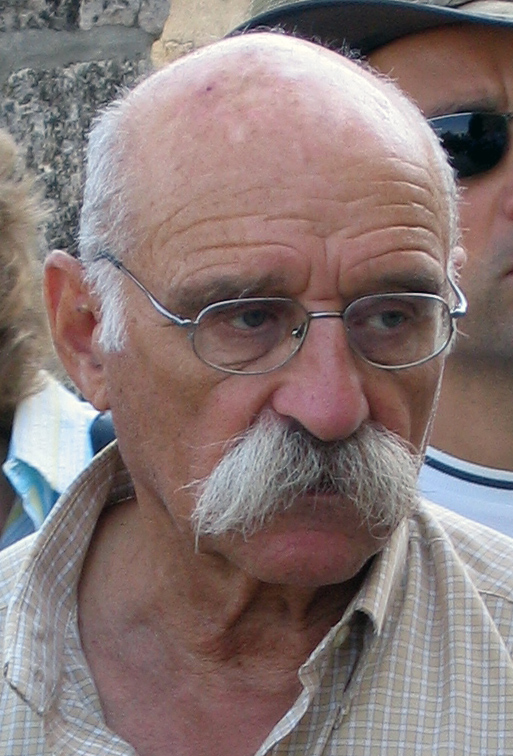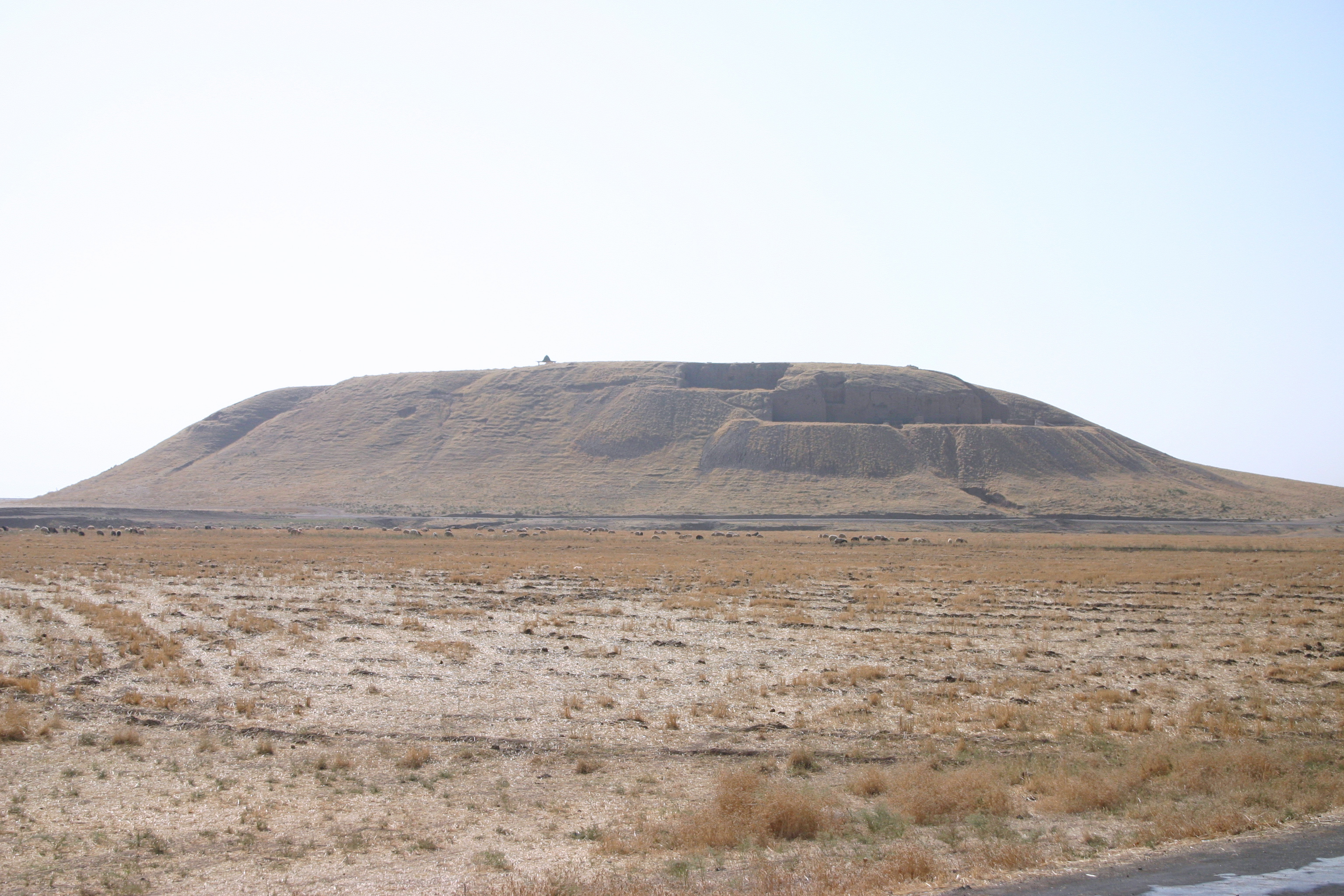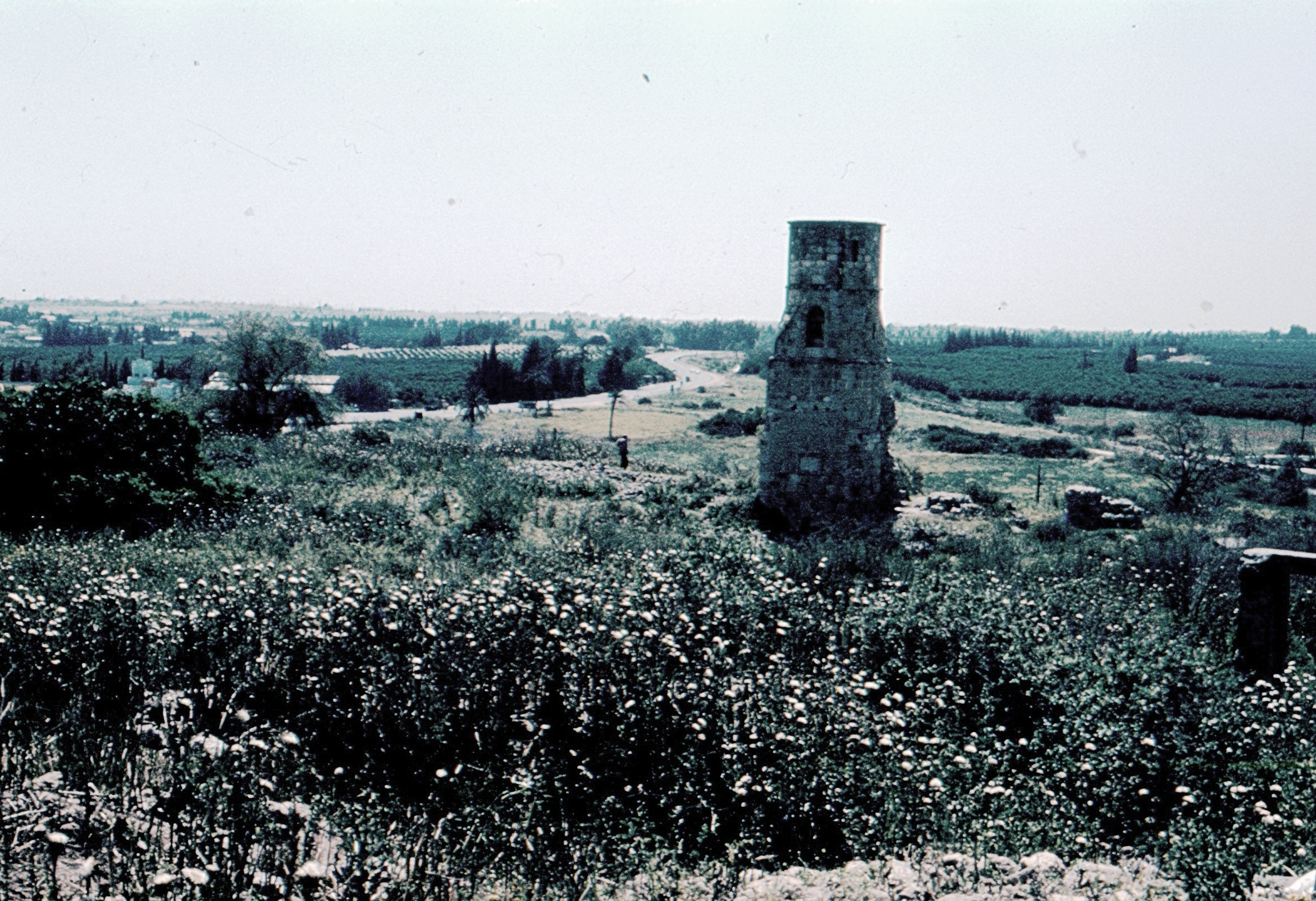|
Ibelin (castle)
Ibelin was a crusader castle in the Latin Kingdom of Jerusalem. It was the fief of the noble house of Ibelin, which later achieved great prominence in the kingdom. Ibelin was built in 1141 by King Fulk of Jerusalem to guard the kingdom's southern border, though its importance declined as the border moved south. It remained the centre of the Lordship of Ibelin, until the collapse of the Kingdom of Jerusalem in 1187. The castle was captured by Saladin in 1187 after the crusader defeat at Hattin, and was destroyed. History Ibelin was built in 1141, one of four castles on the southern border of the kingdom, between the crusader city of Jaffa and the Fatimid city of Ascalon.Kennedy p31 Ibelin, and the other castles, were built to guard against attacks from Ascalon, to provide shelter for the people when attacked, and to serve as a base for crusader attacks of Fatimids.Kennedy p32 Ascalon was a threat to the kingdom during the first half of the 12th century; the Fatimids staged raids ... [...More Info...] [...Related Items...] OR: [Wikipedia] [Google] [Baidu] |
Kingdom Of Jerusalem
The Kingdom of Jerusalem ( la, Regnum Hierosolymitanum; fro, Roiaume de Jherusalem), officially known as the Latin Kingdom of Jerusalem or the Frankish Kingdom of Palestine,Example (title of works): was a Crusader state that was established in the Levant immediately after the First Crusade. It lasted for almost two hundred years, from the accession of Godfrey of Bouillon in 1099 until the siege of Acre in 1291. Its history is divided into two periods with a brief interruption in its existence, beginning with its collapse after the siege of Jerusalem in 1187 and its restoration after the Third Crusade in 1192. The original Kingdom of Jerusalem lasted from 1099 to 1187 before being almost entirely overrun by the Ayyubid Sultanate under Saladin. Following the Third Crusade, it was re-established in Acre in 1192. The re-established state is commonly known as the "Second Kingdom of Jerusalem" or alternatively as the "Kingdom of Acre" after its new capital city. Acre rem ... [...More Info...] [...Related Items...] OR: [Wikipedia] [Google] [Baidu] |
Castrum Arnaldi
Yalo ( ar, يالو, also transliterated Yalu) was a Palestinian Arab village located 13 kilometres southeast of Ramla. Identified by Edward Robinson as the ancient Canaanite and Israelite city of Aijalon.Robinson and Smith, 1841, vol 3, pp8081 During the Middle Ages, it was the site of a Crusader castle, Castrum Arnaldi. Following the 1948 Arab-Israeli War, Jordan annexed the West Bank, including the village of Yalo. Yalo's population increased dramatically owing to an influx of Palestinian refugees from neighbouring towns and villages depopulated during the war. During the 1967 Six Day War, Yalo's inhabitants were expelled by the Israel Defense Forces (IDF) and the village was destroyed. Yalo and the area surrounding Latrun were annexed from Jordan by Israel. Subsequently, with donations from Canadian benefactors, the Jewish National Fund built a recreational space, Canada Park, which contains the former sites of Yalo and two other neighbouring villages, Dayr Ayyub and Imwa ... [...More Info...] [...Related Items...] OR: [Wikipedia] [Google] [Baidu] |
Castles And Fortifications Of The Kingdom Of Jerusalem
A castle is a type of fortified structure built during the Middle Ages predominantly by the nobility or royalty and by military orders. Scholars debate the scope of the word ''castle'', but usually consider it to be the private fortified residence of a lord or noble. This is distinct from a palace, which is not fortified; from a fortress, which was not always a residence for royalty or nobility; from a ''pleasance'' which was a walled-in residence for nobility, but not adequately fortified; and from a fortified settlement, which was a public defence – though there are many similarities among these types of construction. Use of the term has varied over time and has also been applied to structures such as hill forts and 19th-20th century homes built to resemble castles. Over the approximately 900 years when genuine castles were built, they took on a great many forms with many different features, although some, such as curtain walls, arrowslits, and portcullises, were ... [...More Info...] [...Related Items...] OR: [Wikipedia] [Google] [Baidu] |
Crusader Castles
Crusader or Crusaders may refer to: Military * Crusader, a participant in one of the Crusades * Convair NB-36H Crusader, an experimental nuclear-powered bomber * Crusader tank, a British cruiser tank of World War II * Crusaders (guerrilla), a Croatian anti-communist guerrilla army * F-8 Crusader, a U.S. Navy fighter jet ** XF8U-3 Crusader III, an experimental fighter intended to replace the F-8 * , three British ships * Operation Crusader, a British attack in North Africa in the Second World War * VMFA-122 ''Crusaders'', United States Marine Corps fixed wing Fighter-Attack Squadron 122 * XM2001 Crusader, an American self-propelled artillery project Arts, entertainment, and media Fictional characters * Crusader (''Dungeons & Dragons''), a ''Dungeons & Dragons'' character class * Crusader (Marvel Comics), two different fictional characters in Marvel Comics * Crusader, an alias used by a character claiming to be Marvel Boy * Caped Crusader, an epithet for Batman * Crusader ... [...More Info...] [...Related Items...] OR: [Wikipedia] [Google] [Baidu] |
Dan Bahat
Dan Bahat ( he, דן בהט, born 1938) is an Israeli archaeologist especially known for his excavations in Jerusalem , particularly at the Western Wall tunnels. Biography Dan Bahat was born in Poland to parents who were citizens of Mandatory Palestine.Dan Bahat: Curriculum vitae Bar-Ilan University The family moved to in 1939 and became Israeli citizens in 1952. He served in the from 1956 to 1958. In 1964 he gained a |
Yavne
Yavne ( he, יַבְנֶה) or Yavneh is a city in the Central District of Israel. In many English translations of the Bible, it is known as Jabneh . During Greco-Roman times, it was known as Jamnia ( grc, Ἰαμνία ''Iamníā''; la, Iamnia); to the Crusaders as Ibelin; and before 1948, as Yibna ( ar, يبنى). History Yavne was one of the major ancient cities in the southern coastal plain, situated south of Jaffa, north of Ashdod, and east of the Mediterranean.Moshe Fischer, Itamar Taxel and David AmitRural Settlement in the Vicinity of Yavneh in the Byzantine Period: A Religio-Archaeological Perspective Bulletin of the American Schools of Oriental Research, No. 350 (May, 2008), pp. 7-35. Excavations were carried out on the ancient tell (mound created by accumulation of archaeological remains) known as ''Tel Yavne'' (Hebrew), which developed on a natural kurkar hill. The tell was inhabited, possibly continuously, from either the Bronze or Iron Age until the B ... [...More Info...] [...Related Items...] OR: [Wikipedia] [Google] [Baidu] |
Blanchegarde
Tell es-Safi ( ar, تل الصافي, Tall aṣ-Ṣāfī, "White hill"; he, תל צפית, ''Tel Tzafit'') was an Arab Palestinian village, located on the southern banks of Wadi 'Ajjur, northwest of Hebron which had its Arab population expelled during the 1948 Arab-Israeli war on orders of Shimon Avidan, commander of the Givati Brigade. Archaeological excavations show that the site (a '' tell'' or archaeological mound) was continuously inhabited since the 5th millennium BCE. It appears on the Madaba Map as ''Saphitha'', while the Crusaders called it ''Blanche Garde''.Kallai-Kleinmann (1958), p. 155 Tsafrir (1994), p. 134 It is mentioned by Arab geographers in the 13th and 16th centuries. Under the Ottoman Empire, it was part of the district of Gaza. In modern times, the houses were built of sun-dried brick. The villagers were Muslim and cultivated cereals and orchards. Today the site, known as Tel Tzafit, is an Israeli national park incorporating archaeological remains whi ... [...More Info...] [...Related Items...] OR: [Wikipedia] [Google] [Baidu] |
Barisan Of Ibelin
Barisan of Ibelin (french: Barisan d'Ibelin; died 1150) was an important figure in the crusader Kingdom of Jerusalem, and was the founder of the Ibelin family. His name was later written as "Balian" and he is sometimes known as Balian the Elder, Barisan the Old or Balian I. Barisan was lord of Ramla from 1138 to 1150. Barisan's origins are obscure. The Ibelins later claimed to be descended from the viscounts of Chartres, but according to Peter W. Edbury, Barisan was probably from northern Italy. According to Jonathan Riley-Smith, however, he may have indeed been connected to Chartres, as the brother of Hugh of Le Puiset, Count of Jaffa; he would then have also been a cousin to the Montlhéry family of King Baldwin II of Jerusalem. However, nothing certain is known of his life before 1115, when he appears as constable of Jaffa under Hugh. In 1120 he was present at the Council of Nablus, where the first laws of the kingdom were promulgated, perhaps representing the new, underaged ... [...More Info...] [...Related Items...] OR: [Wikipedia] [Google] [Baidu] |
Tell (archaeology)
In archaeology, a tell or tel (borrowed into English from ar, تَلّ, ', 'mound' or 'small hill'), is an artificial topographical feature, a species of mound consisting of the accumulated and stratified debris of a succession of consecutive settlements at the same site, the refuse of generations of people who built and inhabited them, and of natural sediment. (Very limited snippet view).Matthews (2020)Introduction and Definition/ref> Tells are most commonly associated with the ancient Near East, but they are also found elsewhere, such as Southern and parts of Central Europe, from Greece and Bulgaria to Hungary and SpainBlanco-González & Kienlin, eds (2020), 6th page of chapter 1, see map. and in North Africa. Within the Near East, they are concentrated in less arid regions, including Upper Mesopotamia, the Southern Levant, Anatolia and Iran, which had more continuous settlement. Eurasian tells date to the Neolithic,Blanco-González & Kienlin, eds (2020), 2nd page ... [...More Info...] [...Related Items...] OR: [Wikipedia] [Google] [Baidu] |
Yibna
Yibna ( ar, يبنى; ''Jabneh'' or ''Jabneel'' in Biblical times; ''Jamnia'' in Roman times; '' Ibelin'' to the Crusaders), or Tel Yavne is an archaeological site and depopulated Palestinian town. The ruins are located immediately southeast of the modern Israeli city of Yavne. The town had a population of 5,420 in 1948, located 15 kilometers southwest of Ramla.Khalidi, 1992, p.421 Yibna was taken by Israeli forces on 4 June 1948, and was depopulated during the military assault and expulsion. It is a significant site for post-biblical Jewish history, as it was the location of the Council of Jamnia, considered the birthplace of modern Rabbinic Judaism. It is also significant in the history of the Crusades, as the location of the House of Ibelin. Name In many English translations of the Bible, it is known as Yavne or Jabneh . During Greco-Roman times, it was known as Jamnia ( grc, Ἰαμνία ''Iamníā''; la, Iamnia); to the Crusaders as Ibelin; and before 1948, as Yibna ( ... [...More Info...] [...Related Items...] OR: [Wikipedia] [Google] [Baidu] |
William Of Malines
William of Malines (or William of Messines) (died 1145/6) was a Flemish priest who was the Prior of the Church of the Holy Sepulchre from 1127 to 1130 and was then Latin Patriarch of Jerusalem from 1130 until his death. He is sometimes called William I to distinguish him from William of Agen, second patriarch of that name, but he was the second William to serve as prior of the Holy Sepulchre after William the Englishman. William of Tyre described William of Mesines as a man of "praiseworthy habits". As patriarch, he was an important supporter of Queen Melisende and is described as a man capable yet pliable. He received a letter from Bernard of Clairvaux urging him to support the Knights Templar, who had received their papal privileges at the same time as William's embassy to Rome. William took the initiative in constructing a castle, the "Castrum Arnaldi" (or ''Chastel Arnoul'') at Yalo, to guard the road between Jerusalem and Jaffa in 1132–33, along with some citizens. It was ... [...More Info...] [...Related Items...] OR: [Wikipedia] [Google] [Baidu] |






